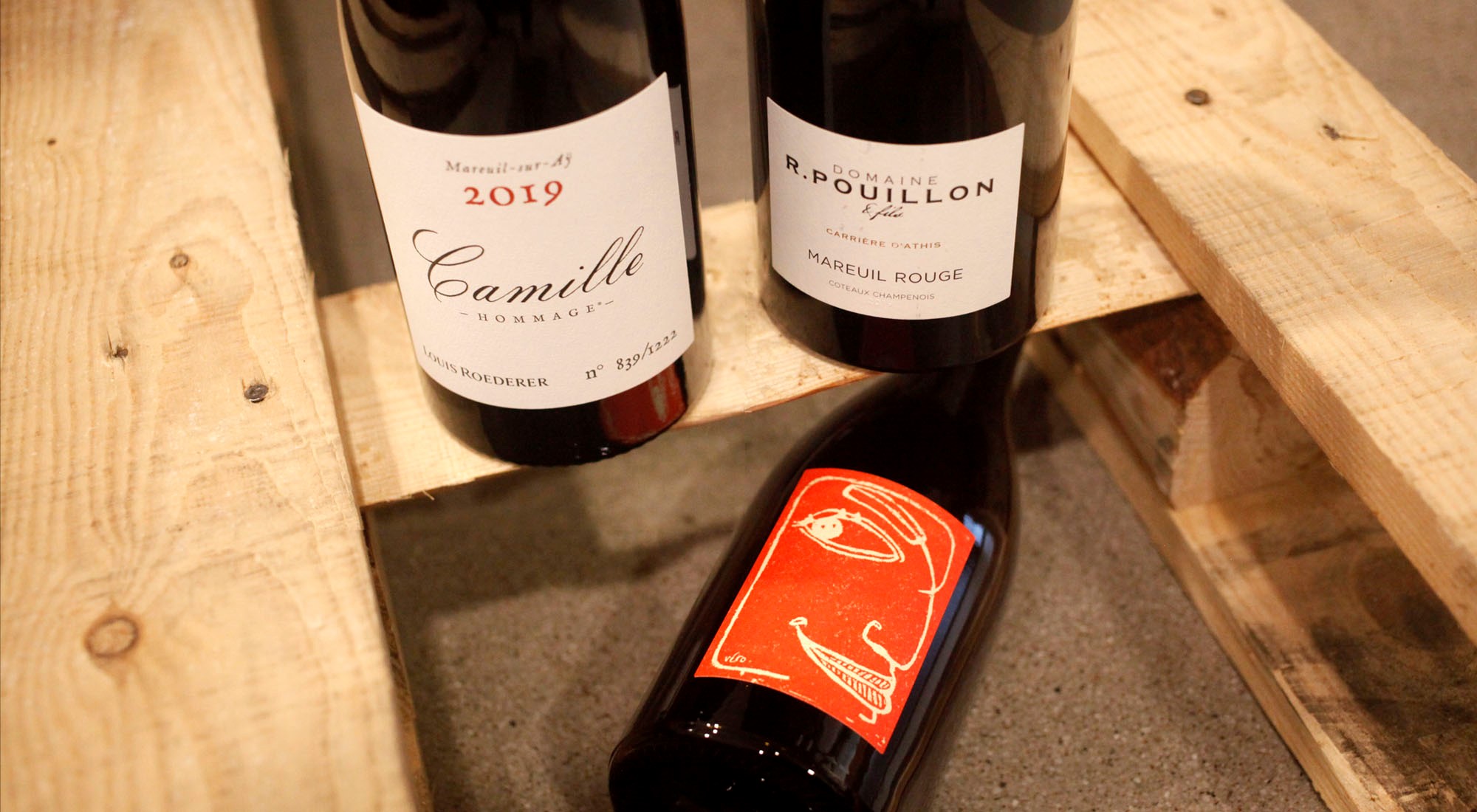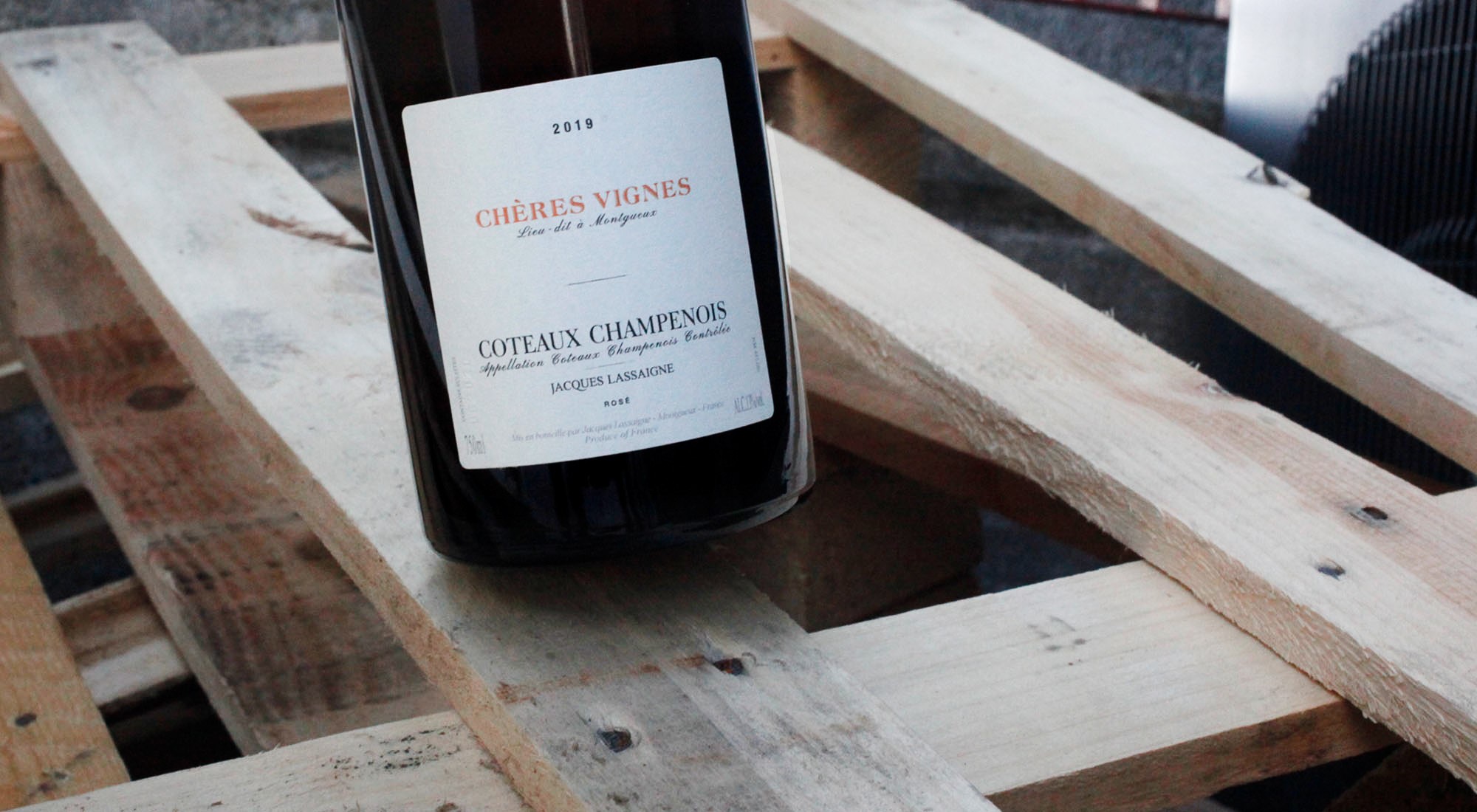If the statement "It is not a Champagne if it is not come from Champagne" is true, it is equally true that prior to the birth of Champagne, this territory was traditionally the kingdom of still wines with the so-called "Côteaux Champenoise", or red wines, the clairets, but also rosés, paillets and white wines.
The reason why these wines have assumed a marginal role for so long is in the fact that starting from the 19th century, with the increase in the fame of Champagne, the demand for these wines decreased and consequently also their production, so much so that the denomination "Vins natures de Champagne", indicative of the Côteaux Champenois, since 1953 was almost forgotten.
But tradition has prevailed and has been recognized again since 1974, the year in which the AOC "Côteaux Champenois" was established, which joins the other two denominations of controlled origin of Champagne, namely "Champagne" and "Rosé de Riceys ". The denomination indicates red, white and sometimes rosé wines (a rarity), still (also called les vins tranquilles), produced with the same grapes as Champagne: Chardonnay, Pinot Noir, Meunier and other forgotten grape varieties (cépages oubliés) including Arbane, Petit Meslier, Pinot Blanc (Enfumè or Blanc Vrai) and Pinot Gris (Fromenteau). The production has a specific disciplinary which determines grapes, volumes, yields, vinification and aging methods.
The wine-growing area of the AOC Côteaux Champenois is extended over 14 regions: Le Massif de Saint-Thierry, La Butte de Nogent l'Abbesse, La Vallée de la Vesle, La Vallée de l'Ardre, La Montagne de Reims, La Région d 'Epernay, La Vallée de la Marne and the neighboring valleys, La Vallée du Surmelin, La Côte des Blancs, La Région de Congy - Villevenard, La Côte de Sézanne, La Région de Vitry-le-François, La Butte de Montgueux, La Côte des Bar. According to the production disciplinary, the wines must be obtained from the same grapes authorized for Champagne and elaborated in one of the 635 municipalities of the wine-growing Champagne; while the grapes must come from a defined area, that is from the 319 municipalities where the vines have to be planted.
The marketing of the Côteaux Champenois is expected to start on October 15th of the year following the one of the harvest, a shorter period than the minimum 15 months for a basic Champagne and 3 years for a vintage Champagne.
Côteaux Champenois Blanc are still white wines produced mainly from Chardonnay grapes and / or from other forgotten grape varieties (cépages oubliés); in rare cases also from Pinot Noir or Meunier grapes vinified in white. They are original wines with a fine and light structure, in perfect balance with the nerve brought by an acidity to which the wine owes its freshness.
The Côteaux Champenois Rouge are still red wines produced exclusively from Pinot Noir or Meunier grapes and in many cases it is the same wine that is used in the blends of Champagne Rosé. Among the most famous are the red wines, classified as Grands Crus, from the villages of Bouzy and Aÿ, original wines rich in fruit, powerful at first sight but which reveal themselves to be pleasantly soft on the palate.
The Côteaux Champenois Rosé are still rosé wines, they represent a very rare type produced only in certain vintages, in limited quantities and by a few Vignerons.
Although throughout history the Côteaux Champenois have been outclassed by Champagne remaining unknown to many, and from certain points of view they will remain, as they say in Champagne, “une niche dans une niche”, that is a super niche production; there is no doubt that these wines can represent a pleasant surprise, both for those who already appreciate this area and for those who want to discover a noble wine, with an extreme elegance and refinement. In the next paragraphs you will find our short selection.
Also thanks to the climate change that requires ever more precocious harvests and favors a greater aromatic maturity of the grapes and lower acidity, today the Côteaux Champenois are the reflection of winemakers who firmly believe in this appellation and who bet on their relaunch, driven moreover by an evolving market.
 Etienne Calsac, well-known Vigneron who produces the Côteaux Champenois Blanc Photogramme 2020, 100% Petit Meslier, cépages oubliés of Champagne is convinced of this: "I really like making still wines, it is a way to reconnect with a history and it is also a way to access to a more transparent gustatory dimension, without bubbles as a gateway”. His is a definitely intense and rich white wine with splendid fruity and spicy aromas.
Etienne Calsac, well-known Vigneron who produces the Côteaux Champenois Blanc Photogramme 2020, 100% Petit Meslier, cépages oubliés of Champagne is convinced of this: "I really like making still wines, it is a way to reconnect with a history and it is also a way to access to a more transparent gustatory dimension, without bubbles as a gateway”. His is a definitely intense and rich white wine with splendid fruity and spicy aromas.
Côteaux Champenois Le Mesnil 2019 by Bruno Paillard, is a white wine made from 100% Chardonnay. Vinification according to the traditional Burgundy style with aging for about 9 months in barrique before bottling, then rests for another 24 months in the bottle before being marketed. Fresh with a surprising mineral flavor.
 Côteaux Champenois Le Vin Tranquille "Red Label" 2018 by Stroebel (Thimotée), is a red wine made from 100% Meunier. The obsession for the production of still wines has accompanied Timothée Stroebel since the beginning of his enological "adventure". It is a wine with a unique personality, it ferments and ages for about 18 months in oak barrels before bottling - without added sulphites for only 936 bottles.
Côteaux Champenois Le Vin Tranquille "Red Label" 2018 by Stroebel (Thimotée), is a red wine made from 100% Meunier. The obsession for the production of still wines has accompanied Timothée Stroebel since the beginning of his enological "adventure". It is a wine with a unique personality, it ferments and ages for about 18 months in oak barrels before bottling - without added sulphites for only 936 bottles.
Côteaux Champenois Mareuil Rouge "Carrière D'athis" 2019 by R. Pouillon & Fils, is a red wine made from 100% Pinot Noir; it opens with notes of black fruit and light notes of vanilla, while the palate is soft and results in a perfect balance.
Côteaux Champenois Hommage À Camille "Mareuil-Sur-Aÿ" 2019 by Louis Roederer, is a red wine made from 100% Pinot Noir, an explosion of red fruits combined with floral and spicy notes, licorice and fresh pepper. On the palate is silky, velvety and delicious with sweet and chiseled tannins.
 Côteaux Champenois Chères Vignes Rosé 2019 by Jacques Lassaigne, 100% Pinot Noir, is a soft rosé wine with aromas of red fruits and notes of calcareous minerality; the palate is light and elegant. A wine with a wonderful acidity and a long and mineral finish.
Côteaux Champenois Chères Vignes Rosé 2019 by Jacques Lassaigne, 100% Pinot Noir, is a soft rosé wine with aromas of red fruits and notes of calcareous minerality; the palate is light and elegant. A wine with a wonderful acidity and a long and mineral finish.
Discover here the whole Côteaux Champenois collection of GLUGULP!
